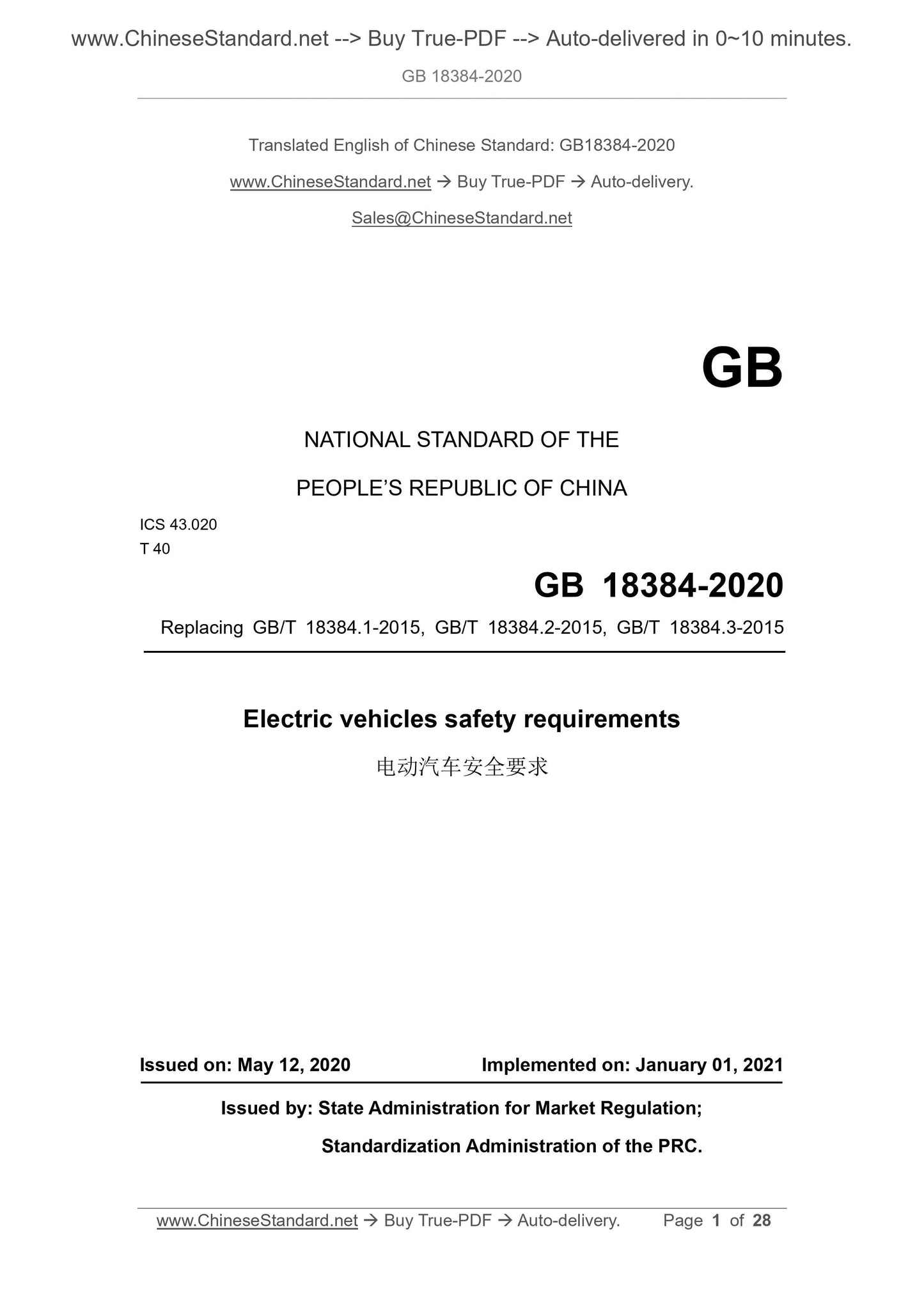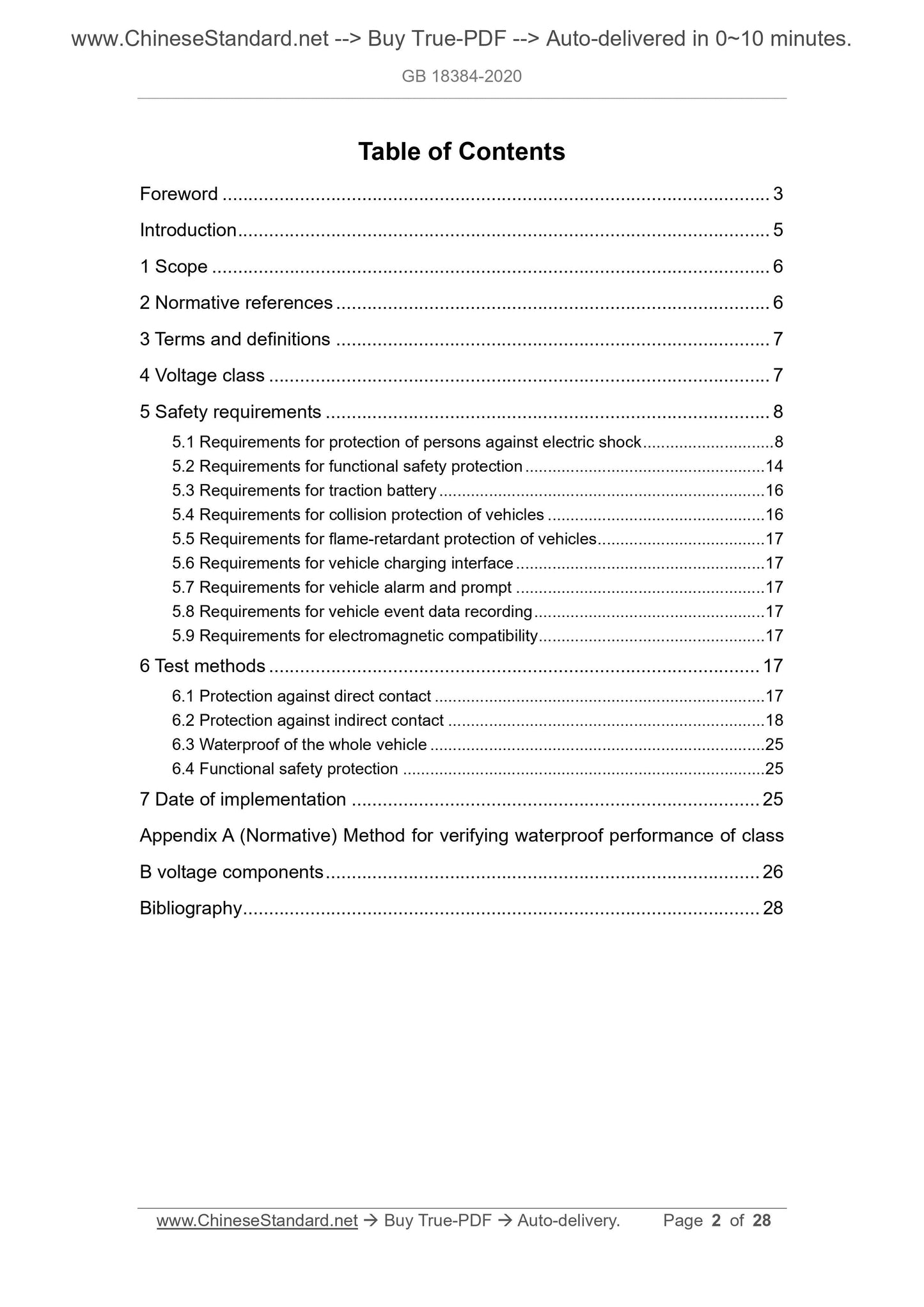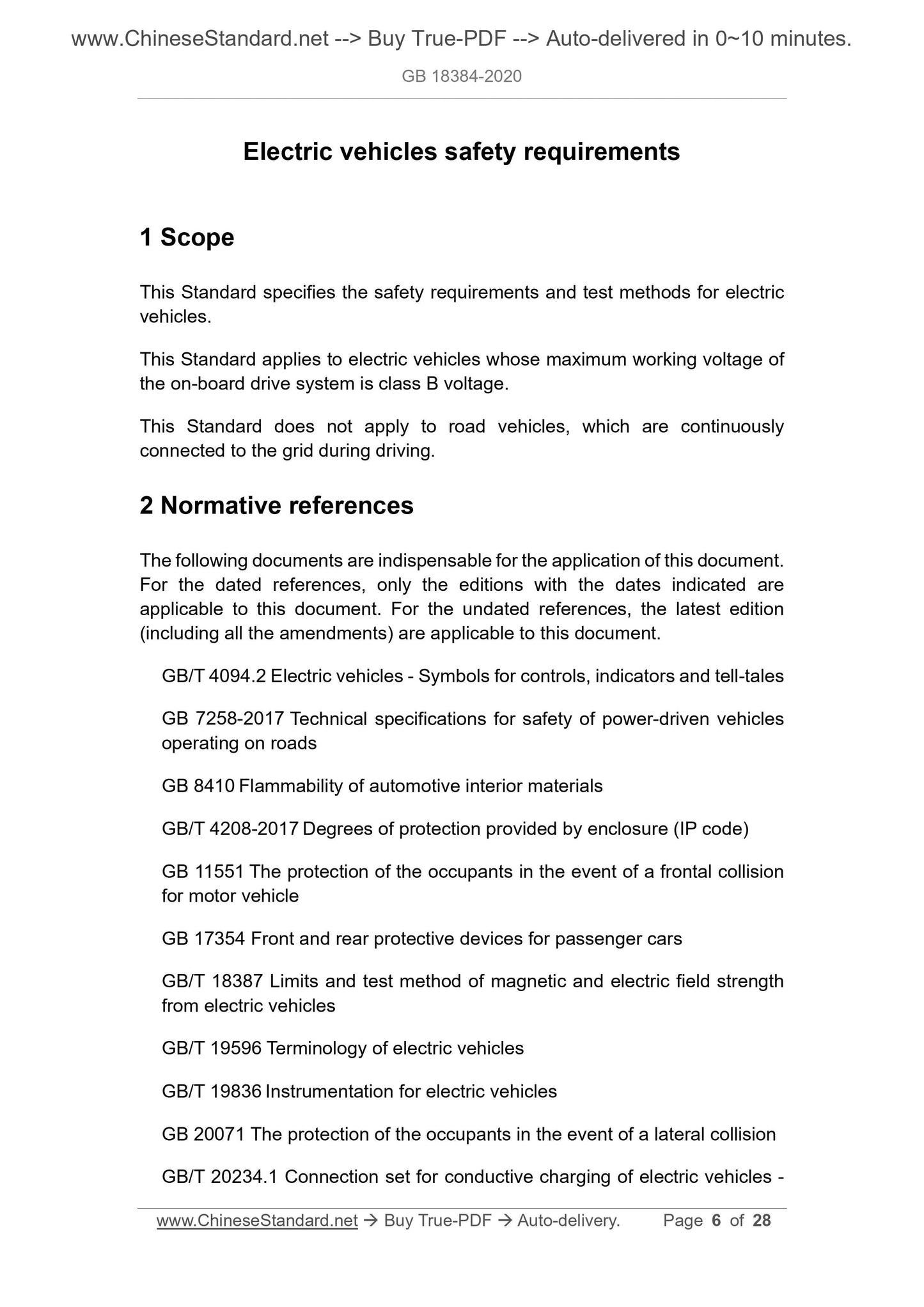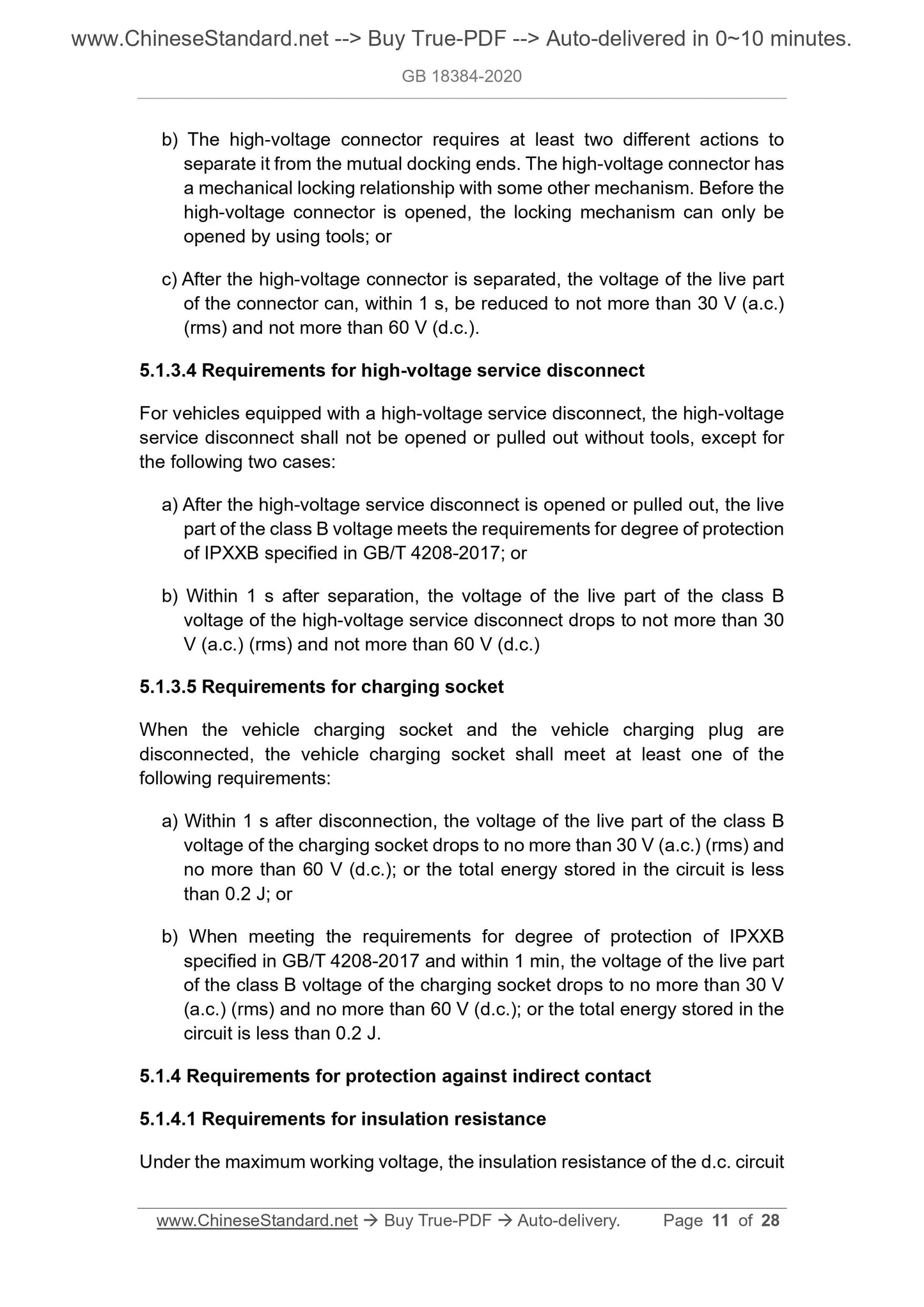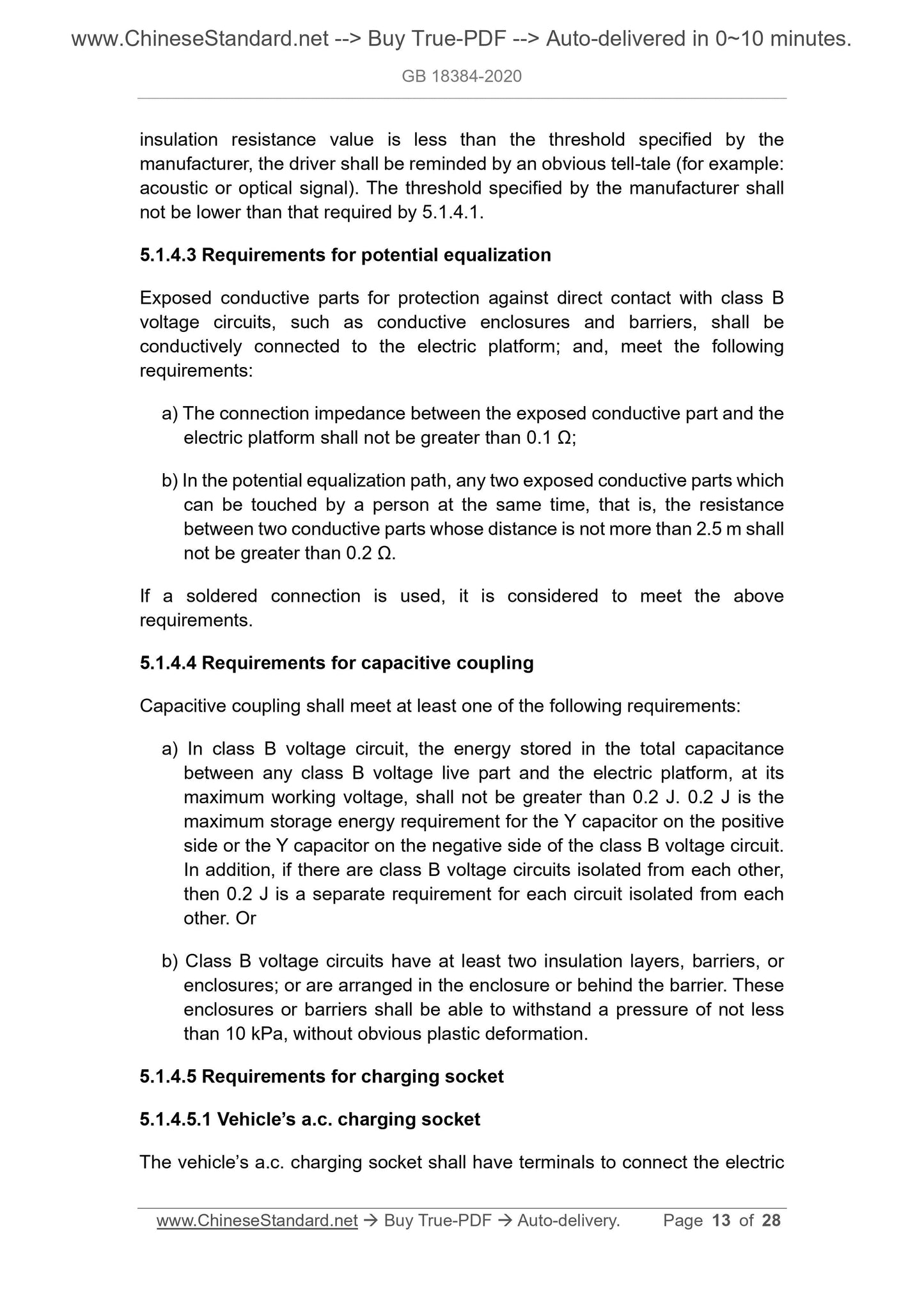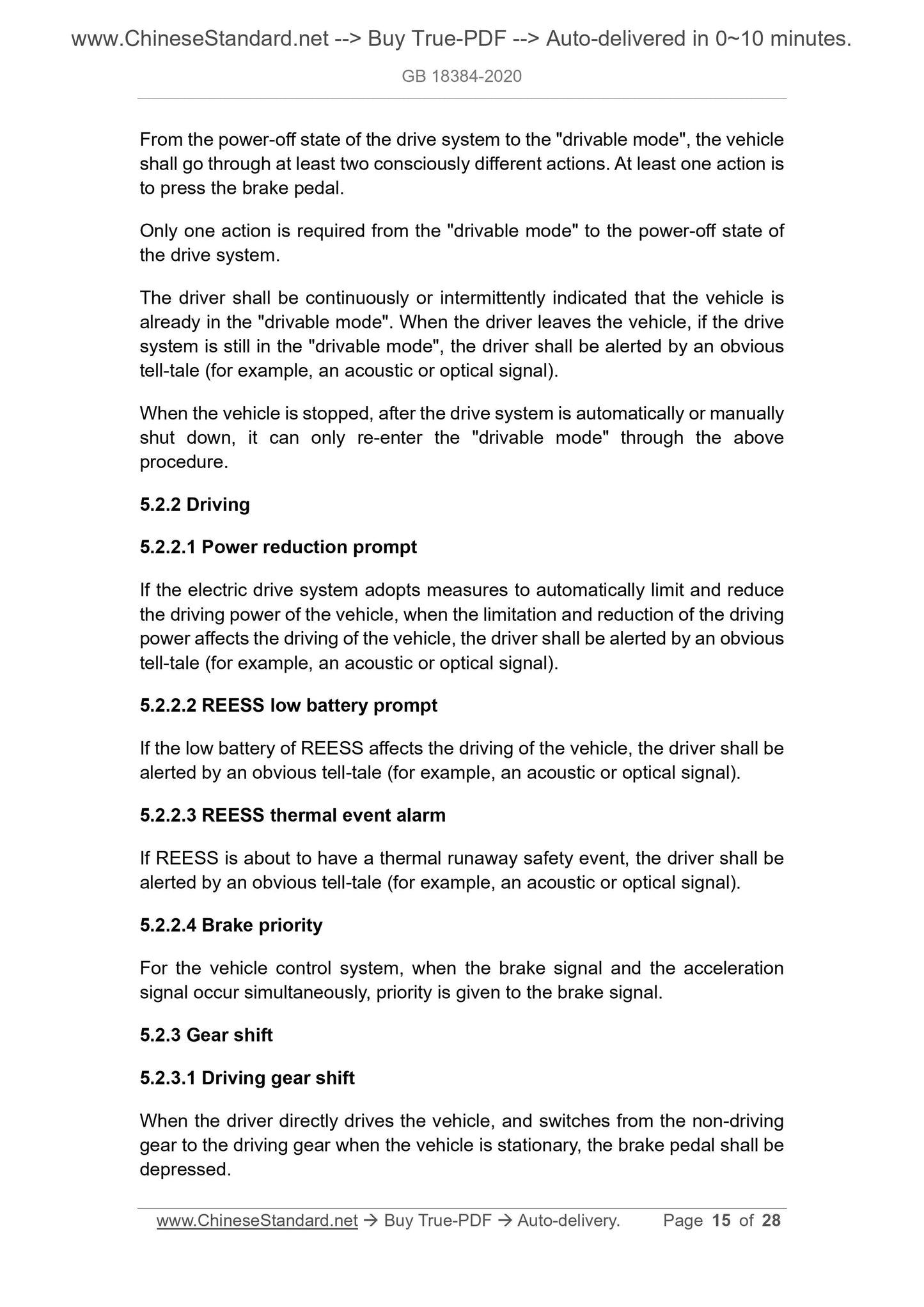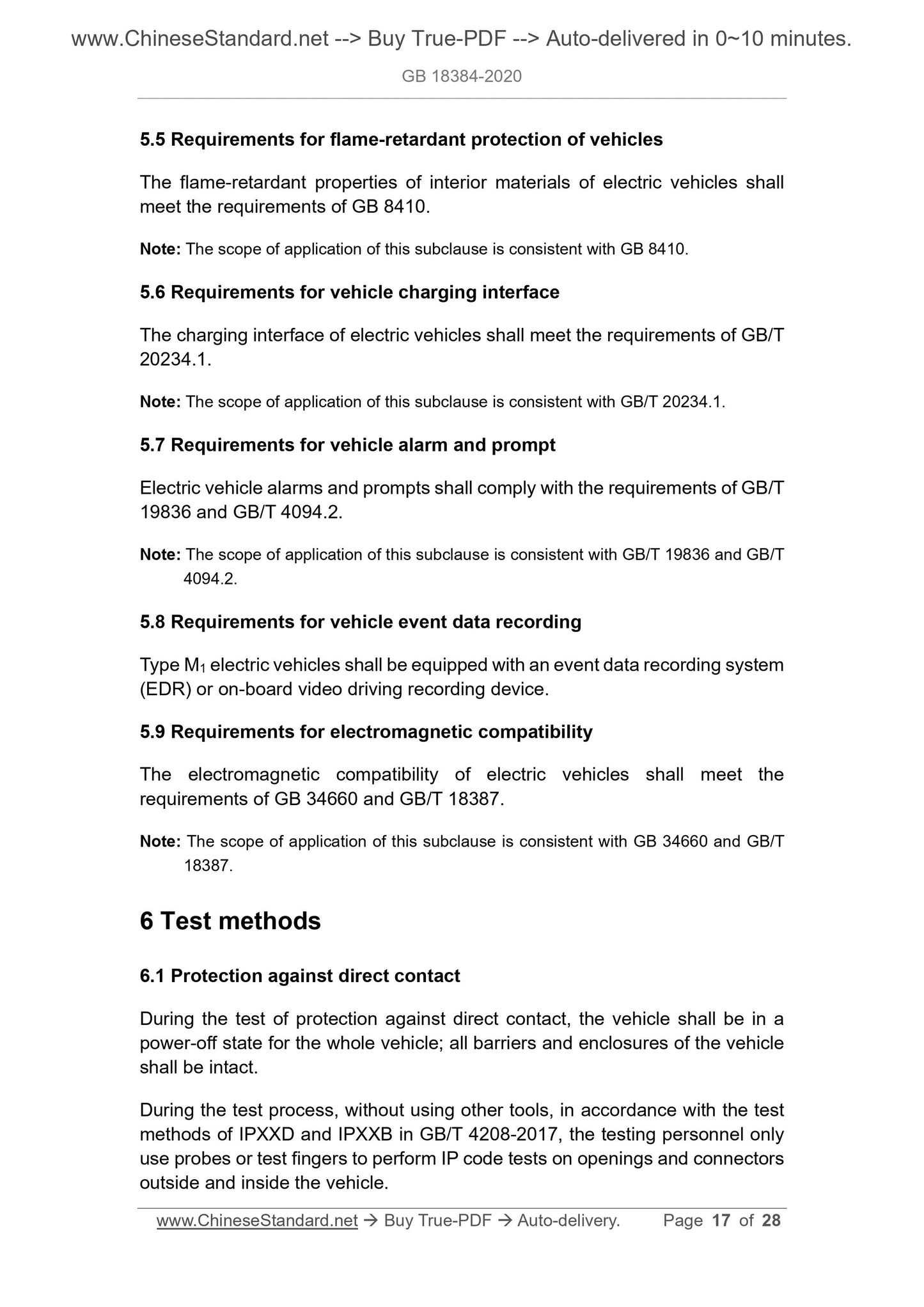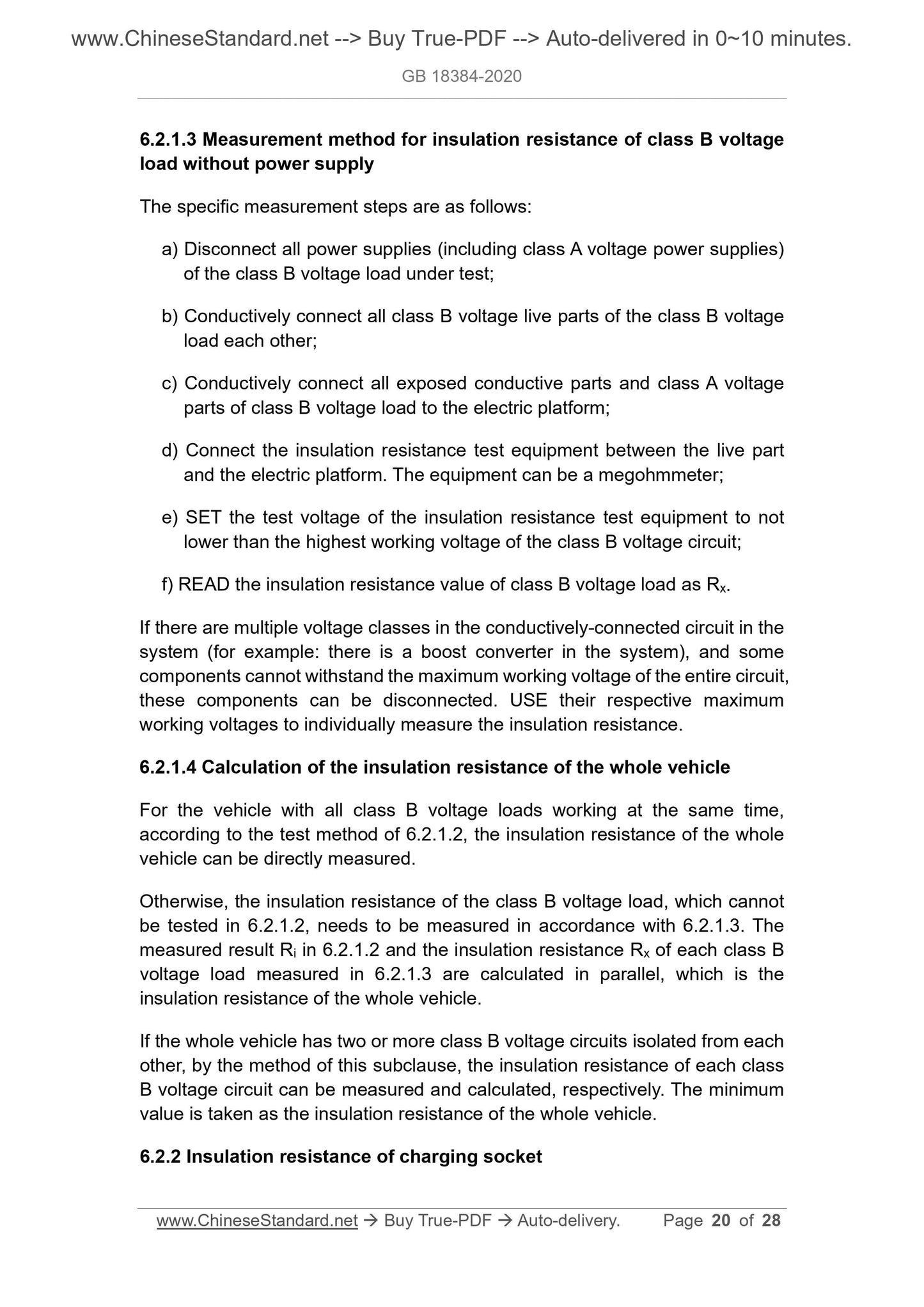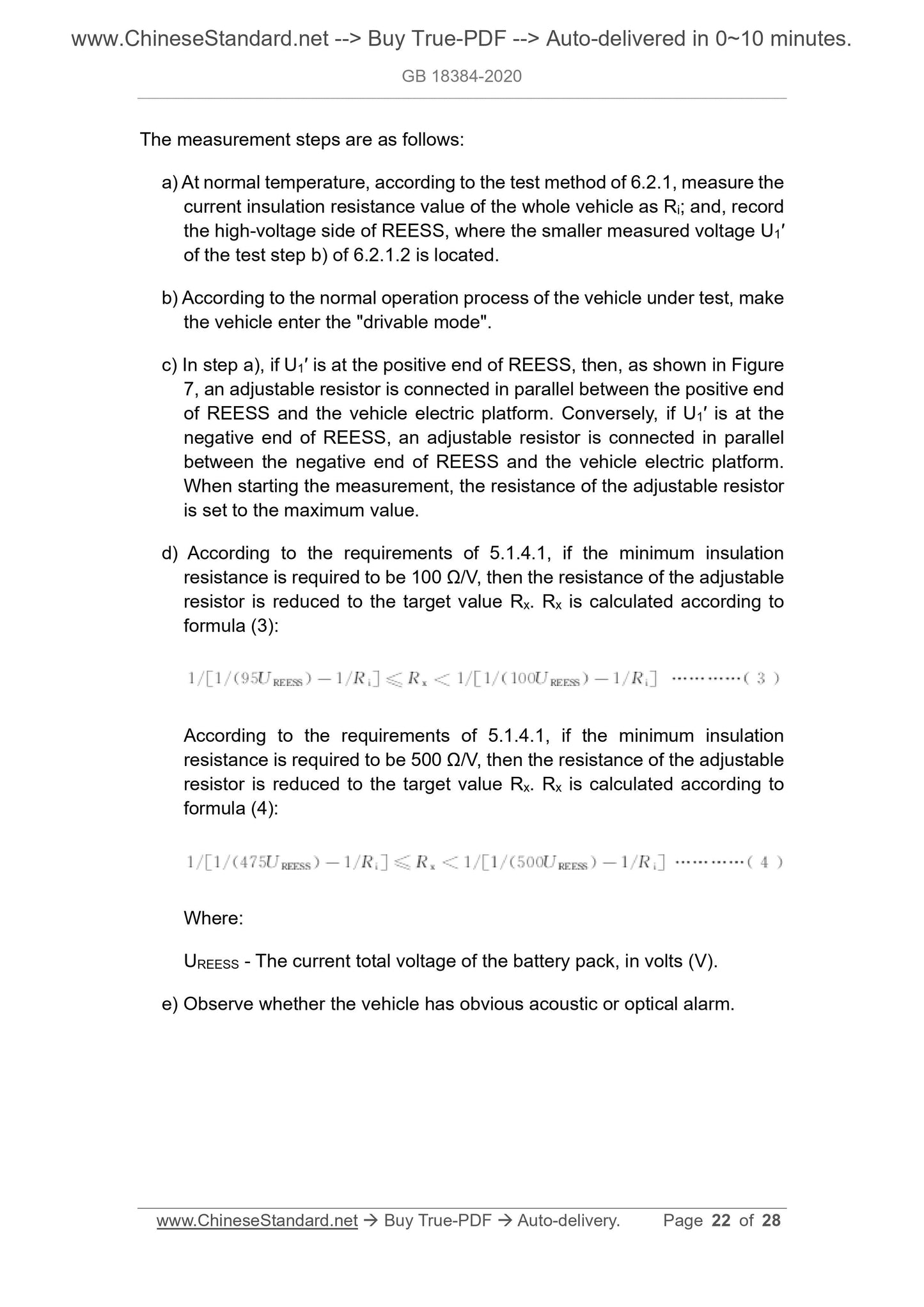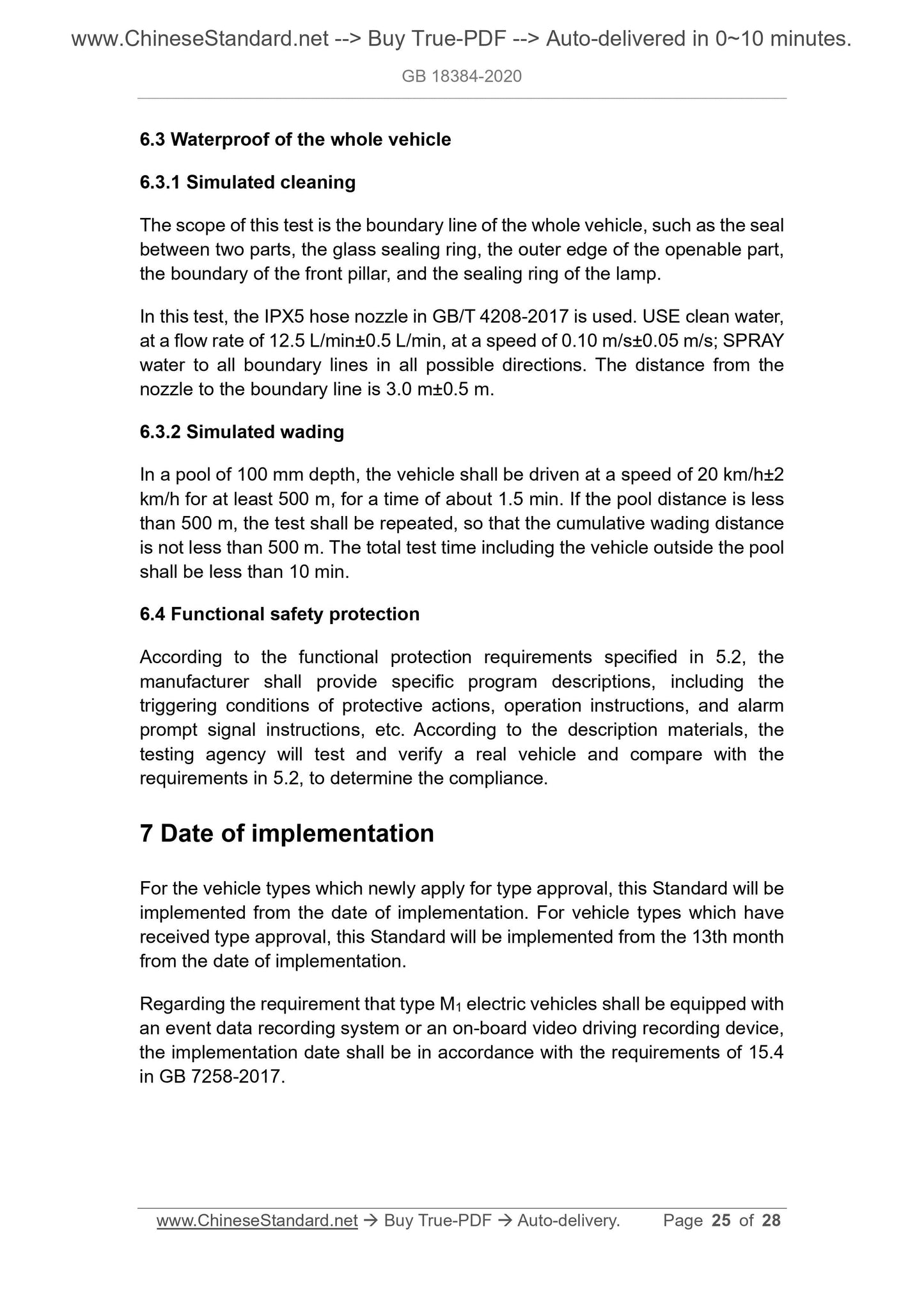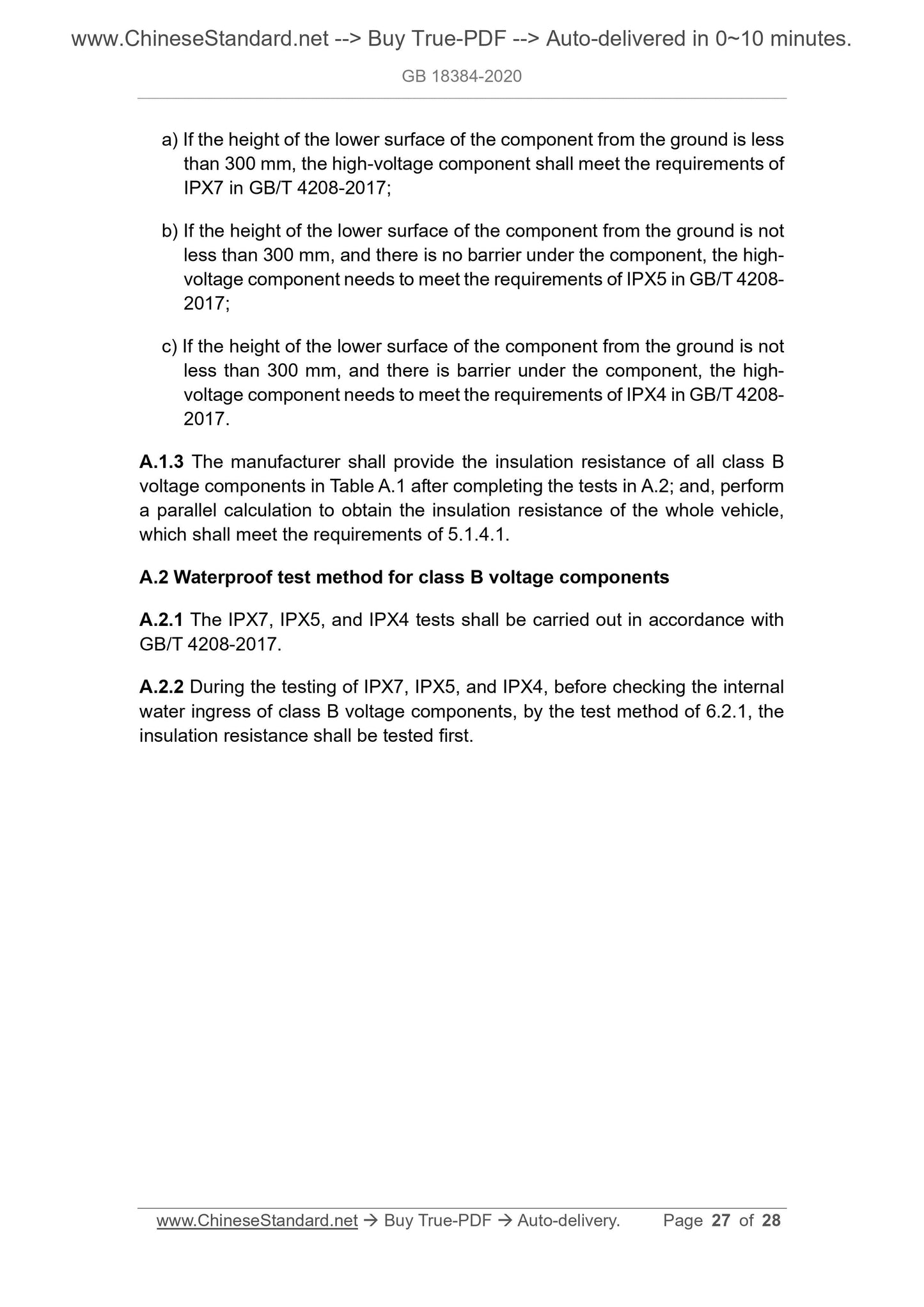1
/
of
11
www.ChineseStandard.us -- Field Test Asia Pte. Ltd.
GB 18384-2020 English PDF
GB 18384-2020 English PDF
Regular price
$185.00
Regular price
Sale price
$185.00
Unit price
/
per
Shipping calculated at checkout.
Couldn't load pickup availability
GB 18384-2020: Electric vehicles safety requirements
Delivery: 9 seconds. Download (and Email) true-PDF + Invoice.Get Quotation: Click GB 18384-2020 (Self-service in 1-minute)
Newer / historical versions: GB 18384-2020
Preview True-PDF
Scope
This Standard specifies the safety requirements and test methods for electricvehicles.
This Standard applies to electric vehicles whose maximum working voltage of
the on-board drive system is class B voltage.
This Standard does not apply to road vehicles, which are continuously
connected to the grid during driving.
Basic Data
| Standard ID | GB 18384-2020 (GB18384-2020) |
| Description (Translated English) | Electric vehicles safety requirements |
| Sector / Industry | National Standard |
| Classification of Chinese Standard | T40 |
| Classification of International Standard | 43.020 |
| Word Count Estimation | 18,117 |
| Date of Issue | 2020-05-12 |
| Date of Implementation | 2021-01-01 |
| Issuing agency(ies) | State Administration for Market Regulation, China National Standardization Administration |
Share
